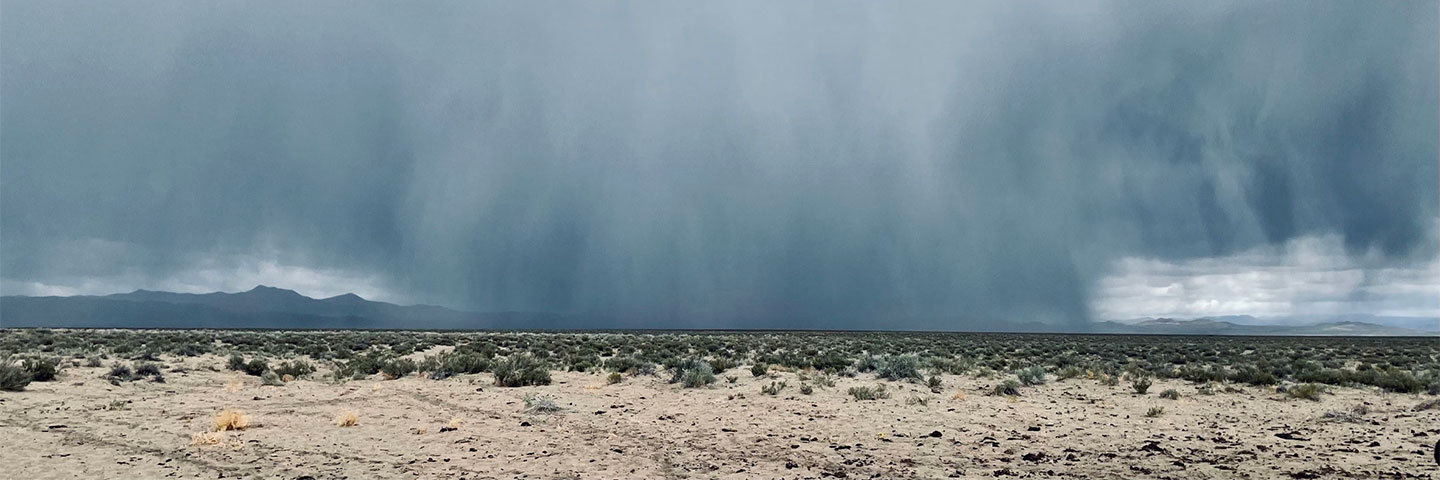Stakeholder Perspectives on Climate Information and Data Needs to Enhance the Resiliency of Water Resources on Reservation Lands in the Southwestern United States

The southwestern U.S. is projected to experience dramatic shifts in water resource availability. Indigenous communities in this arid, water-scarce region are highly vulnerable to these changes but are also leading initiatives for community-based climate adaptation. Research can aid and enhance these adaptation initiatives by identifying and assessing the pressing climate data and information needs of Indigenous communities in the southwestern U.S. This publication reports the results of this research, highlighting prioritized climate data and information needs of survey respondents attending annual tribal climate summits in the southwestern U.S.
Summit attendees who volunteered to participate in this survey research included tribal government staff, farmers, ranchers, researchers and outreach professionals interested in and/or pursuing community-based adaptation to increase the climate resiliency of water resources on arid reservation lands. Approximately 75% of the 98 voluntary survey respondents are Native American, and 83% reside in the Great Basin or Colorado River Basin. The majority (85%) of survey respondents indicated that climate uncertainty poses either major or extreme risks to tribal natural resources and communities. Respondents indicated that the greatest threats that climate uncertainty poses are: water supply shortages, agriculture or food security, human survival, tribal economic well-being, wildlife habitat, water quality impairment, and tribal fisheries. Respondents prioritized climate information needs that aid in assessing climate change impacts, enhancing food security, and integrating traditional knowledge into adaptation. In this sparsely populated and comparatively data-scarce region, respondents prioritized water quality data as their highest data need, followed by streamflow and temperature data.
Additional analyses of survey responses suggest that past professional/occupational experience and educational background are associated with participants’ perspectives and prioritization of climate information and data needs. Results from this study may clarify ways to support climate adaptation on reservation lands through continued collaborative research and outreach.
A summary discussion emphasizes the importance of ethical collaboration when involving Indigenous communities in participatory research, with special attention to protecting traditional knowledges and data sovereignty of Indigenous communities in their pursuit of community-based climate adaptation. This publication concludes by observing that efforts to increase the numbers of Indigenous scientists, natural resource professionals and students will facilitate such protections as tribes increasingly self-determine their respective paths to enhanced climate resiliency of water resources on reservation lands.
Introduction
Climate change impacts on water resources are projected to compound water scarcity in already water-stressed regions in the southwestern U.S. (Li et al., 2017). Current water availability limits the capacity of this arid region to sustainably meet water needs for urban growth and development (MacDonald, 2010). Increasing severity and frequency of drought and/or flooding events, decreasing annual snowpack, and earlier snowmelt impact the social, economic and ecological health of the region (Cozzetto et al., 2013; Draut, Redsteer, & Amoroso, 2013; Fritze, Stewart, & Pebesma, 2011; Knowles, Dettinger, & Cayan, 2006; Miller & Piechota, 2011; Wine & Cadol, 2016).
While climate-driven changes in available water supply affect everyone living and working in this arid region, these changes may affect Indigenous communities on reservation lands more severely (Gamble et al., 2016). Historically limited economic development opportunities, inadequate water delivery infrastructure, unresolved water rights entitlements (Deol & Colby, 2018), and isolated rural land bases add to the particular vulnerability of Indigenous communities to adapt to projected changes in water resources (Cozzetto et al., 2013). Furthermore, Indigenous communities and cultures are relational to their natural environment (Whyte, 2018a; Maldonado et al., 2016) and inform natural resource management decisions on reservation lands (Azar, Holmberg, & Lindgren, 1996; Maldonado et al., 2016). Climate-induced ecological changes, on or near reservation lands, can result in significant losses to cultural resources and a reduction of subsistence and cultural practices that impact community physical and mental health and social well-being (Jantarasami et al., 2018; Lemelin et al., 2010).
Community-based adaptation has emerged as a cost-effective way forward to adapt to climate change by capitalizing upon the wealth of experience and knowledge communities have with regards to climate variability and climate change (McNamara et al., 2020). It is adaptation that is community-led and based on communities’ knowledges, needs, priorities and capacities and fully includes communities in all levels of research, planning and implementation (Reid, 2015; McNamara & Buzzy, 2017).
The extensive socioeconomic, political and cultural diversity that characterizes individual Indigenous communities reinforce the importance of community-based adaptation. Many tribal governments and intertribal organizations are leading the U.S. by providing examples. That is, over the last decade, Indigenous communities across all regions of the U.S. have documented more than 800 climate adaptation activities at the community and/or reservation landscape scale. These include planning and assessment; adaptation and implementation; monitoring and research; governance and capacity-building; youth engagement and cultural continuity. Climate adaptation projects include climate vulnerability assessments, planning and professional development to increase the skills and capacity of tribal staff and natural resource managers, including individual farmers and ranchers (Jantarasami et al., 2018).
To complement the numerous adaptation initiatives already underway on reservation lands, this research aims to assess climate data and information needs and priorities within the southwestern U.S.2 For this study, our target study population or “stakeholders” include individuals living or working on reservations in the southwestern U.S. and who are interested in pursuing or already engaged in climate adaptation. We use a participatory research framework to engage local stakeholders while preventing the unintended extraction of sensitive or protected cultural information (Whyte, 2018a). Avoiding harmful assumptions and generalizations about Indigenous communities is a necessary element of participatory research best practices (Datta et al., 2015). The ethics that such best practices ensure are especially appropriate when working with Indigenous communities wherein research abuses have occurred in the past (Chief, Meadow, & Whyte, 2016; Datta et al., 2015; Klenk et al., 2017).
For the complete special report with study region maps, methods, results and conclusions, use the link below to download the PDF version.


